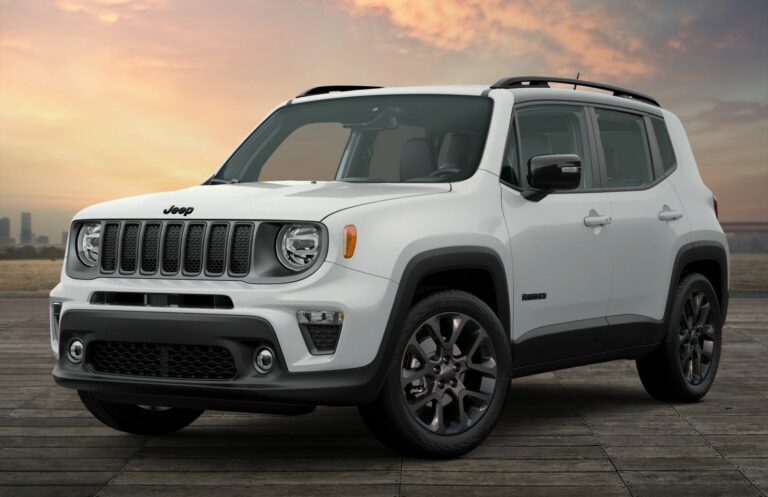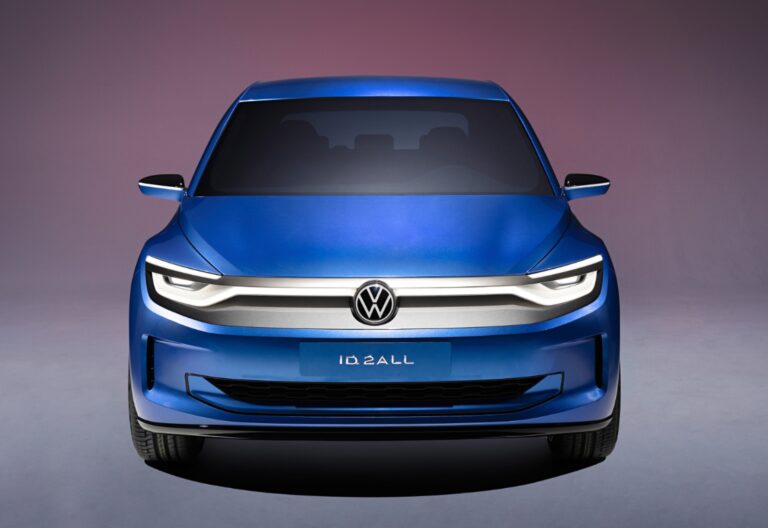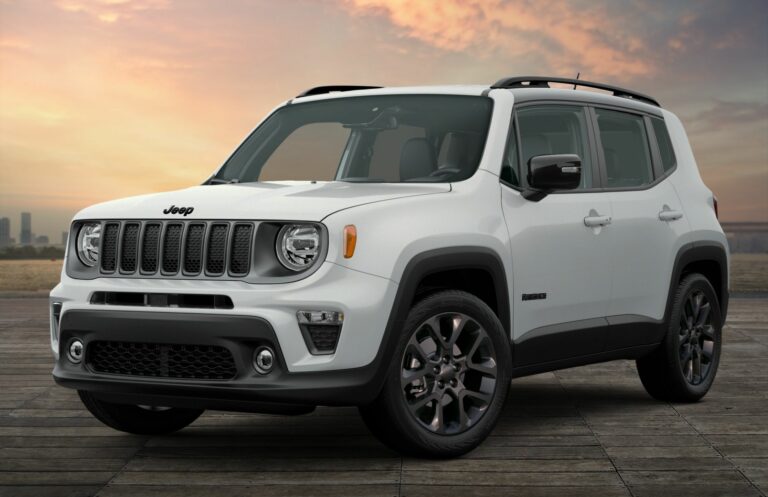Jeep Sahara 2000 For Sale: Your Comprehensive Guide to an Off-Road Icon
Jeep Sahara 2000 For Sale: Your Comprehensive Guide to an Off-Road Icon jeeps.truckstrend.com
In the vast landscape of pre-owned vehicles, few command the enduring respect and passionate following of the Jeep Wrangler. Among its many iterations, the 2000 Jeep Wrangler Sahara stands out as a particularly sought-after model, representing the pinnacle of the iconic TJ generation’s blend of classic design, rugged capability, and a touch of refined comfort. Whether you’re a seasoned off-roader, a weekend adventurer, or simply someone yearning for the unparalleled freedom of open-air motoring, understanding what makes the 2000 Jeep Sahara special – and what to look for when one is "For Sale" – is paramount. This article serves as your comprehensive guide, delving into every facet of this legendary vehicle to help you make an informed decision, whether you’re buying or selling.
The Enduring Appeal of the 2000 Jeep Wrangler Sahara
Jeep Sahara 2000 For Sale: Your Comprehensive Guide to an Off-Road Icon
The year 2000 placed the Jeep Wrangler firmly in its TJ generation (1997-2006), a period widely regarded by enthusiasts as a sweet spot in the Wrangler’s evolution. It retained the classic round headlights and seven-slot grille but introduced coil-spring suspension for a significantly improved on-road ride quality compared to its leaf-sprung YJ predecessor, without sacrificing its legendary off-road prowess.
What makes the Sahara trim specifically so appealing? The Sahara package was designed to offer a more upscale and distinctive look and feel compared to the base SE or Sport models. It typically came with unique exterior features like body-color fender flares, specific alloy wheels, fog lights, and sometimes even a body-color hardtop. Inside, the Sahara often boasted more comfortable and distinctive seating, special trim accents, and a slightly more comprehensive list of standard features, including air conditioning, cruise control, and a premium sound system – amenities that were often optional on lower trims.
Beyond the aesthetics, the core appeal lies in the TJ’s mechanical robustness. Powered by the venerable 4.0-liter inline-six (I6) engine, known for its bulletproof reliability and ample low-end torque, the 2000 Sahara is a workhorse. Its solid axles (Dana 30 front, Dana 35 or optional Dana 44 rear), Command-Trac part-time 4WD system, and short wheelbase make it an incredibly capable off-road machine, able to tackle trails that would leave many modern SUVs stranded. For many, the 2000 Sahara represents the perfect balance: a classic, highly customizable, and mechanically simple vehicle that’s relatively easy to maintain and endlessly fun to drive, both on and off the pavement. Its timeless design ensures it still turns heads, while its capabilities ensure it can still conquer challenges.
Key Features and Specifications of the 2000 Jeep Wrangler Sahara
To truly appreciate the value proposition of a 2000 Jeep Wrangler Sahara For Sale, it’s essential to understand its core specifications and features:
- Engine: The heart of the 2000 Sahara is the 4.0L PowerTech I6 engine. This naturally aspirated, fuel-injected engine produces a healthy 190 horsepower at 4,600 rpm and 235 lb-ft of torque at 3,200 rpm. Its reputation for longevity and easy maintenance is legendary.
- Transmission: Buyers had a choice between a standard Aisin AX-15 5-speed manual transmission (later replaced by the NV3550) or an optional 3-speed automatic transmission (Chrysler 32RH). Both are robust, though the manual is often preferred by enthusiasts for greater control and engagement.
- Transfer Case: All 2000 Saharas came equipped with the Command-Trac NV231 part-time 4WD system, offering 2H, 4H, and 4L settings. This reliable system ensures power distribution to all four wheels when needed.
- Axles: Standard equipment included a Dana 30 front axle and a Dana 35 rear axle. Crucially, the Sahara trim often had the option for a more robust Dana 44 rear axle, a highly desirable upgrade for serious off-roaders due to its increased strength and larger ring gear.
- Suspension: The TJ generation introduced a coil-spring suspension setup at all four corners, a significant upgrade over previous models. This, combined with leading/trailing arms, provides a more compliant ride on pavement while maintaining excellent articulation off-road.
- Sahara Specific Features:
- Exterior: Body-color fender flares, unique "Sahara" badging, specific 15-inch alloy wheels (often with 30-inch tires), fog lights, and sometimes a body-color hardtop.
- Interior: Premium cloth or vinyl seats with unique patterns (often a Khaki or Spice color scheme), unique door panel inserts, full carpeting, air conditioning, cruise control, and a full center console.
- Dimensions: Approximately 152 inches long, 70 inches wide, and 70 inches tall (with hardtop). Its compact footprint contributes to its agility off-road.
- Fuel Economy: Expect around 15-18 MPG combined, depending on transmission, tire size, and driving habits. It’s a robust engine, not a fuel miser.

What to Look For When Buying a 2000 Jeep Wrangler Sahara
When a 2000 Jeep Sahara is "For Sale," a thorough inspection is crucial. These vehicles are nearly a quarter-century old, and their history of use (or abuse) can significantly impact their condition and value.
- Rust, Rust, Rust: This is arguably the single most important factor. Inspect the frame meticulously, especially around the control arm mounts, skid plates, and suspension components. Look for rot, patches, or severe flaking. Also check the body: rocker panels, floorboards (under the carpet), wheel wells, and behind the bumpers. Surface rust is common; frame perforation is a deal-breaker unless you’re prepared for major repair.
- Engine Health (4.0L I6):
- Leaks: Common spots include the valve cover gasket, oil pan gasket, and rear main seal. Minor seepage is often acceptable, but active drips need attention.
- Coolant: Check for clean, green/orange coolant. Brown or sludgy coolant indicates poor maintenance.
- Sound: Listen for any knocking, ticking, or excessive lifter noise. The 4.0L is generally noisy, but distinct metallic sounds can indicate wear.
- Check Engine Light: Always scan for codes, even if the light isn’t on (it might have been cleared).
- Transmission & Drivetrain:
- Manual: Check for smooth shifts, clutch engagement (no slipping), and any grinding noises.
- Automatic: Ensure smooth shifts, no harsh engagement, and proper fluid level/color.
- Transfer Case: Test 2H, 4H, and 4L engagement. Listen for grinding.
- Axles/Differentials: Check for leaks around the differential covers and listen for any humming or clunking sounds during the test drive, which could indicate worn gears or bearings.
- U-Joints: Look for rust or play in the driveshaft U-joints.
- Suspension & Steering:
- "Death Wobble": While not exclusive to TJs, it’s a known issue. Look for excessive play in tie rod ends, track bar, ball joints, and control arm bushings. Any looseness here can lead to terrifying vibrations at speed.
- Shocks/Springs: Check for leaks on shocks and ensure springs aren’t broken or sagging excessively.
- Lift Kits: If lifted, assess the quality of the components and installation. Poorly installed lifts can cause numerous problems.
- Electrical & Interior: Test all lights, wipers, power windows (if equipped), gauges, heater, and AC. Check for any missing trim pieces, rips in seats, or water stains.
- Tires: Inspect tire condition, tread depth, and ensure they are all the same size and type.
- Documentation: Ask for maintenance records. A well-documented history of service is a strong indicator of a cared-for vehicle. A CarFax or AutoCheck report is highly recommended.
- Test Drive: Drive the Jeep at various speeds, on different surfaces (if possible), and engage 4WD. Listen for unusual noises, feel for vibrations, and assess braking performance and steering responsiveness.
Preparing Your 2000 Jeep Wrangler Sahara for Sale
If you’re the one with a 2000 Jeep Sahara For Sale, proper preparation can significantly increase its appeal and value.
- Deep Clean: A thorough detail, inside and out, is non-negotiable. Clean the engine bay, wash and wax the exterior, and vacuum/shampoo the interior. Remove personal items.
- Address Minor Issues: Fix small, inexpensive problems like burnt-out bulbs, non-working wipers, or minor fluid leaks. These show prospective buyers you’ve cared for the vehicle.
- Perform Basic Maintenance: An oil change, fresh air filter, and checking/topping off all fluids can inspire confidence.
- Gather Documentation: Organize all service records, the original owner’s manual, and the title. A clean, clear title is essential.
- Take High-Quality Photos: Capture the Jeep from multiple angles, highlighting its unique Sahara features. Include interior shots, the engine bay, and any desirable modifications. Be honest about any imperfections but ensure they are clearly shown.
- Write an Honest Description: Be transparent about the vehicle’s history, mileage, any known flaws, and recent maintenance or upgrades. List all Sahara-specific features and any aftermarket parts.
- Research Pricing: Use online marketplaces (like Kelley Blue Book, Edmunds, or dedicated Jeep forums) to research what similar 2000 Sahara models with comparable mileage and condition are selling for in your area. Price competitively.
Maximizing Value and Enjoyment: Ownership Tips
For those who successfully acquire a 2000 Jeep Wrangler Sahara, these tips will help ensure years of enjoyment:
- Regular Maintenance is Key: Stick to the manufacturer’s recommended maintenance schedule. Regular oil changes, differential fluid changes, transfer case service, and greasing U-joints will extend its life.
- Address Rust Proactively: Even if your newly acquired Sahara is relatively rust-free, take steps to prevent it. Undercoating, cleaning out frame holes, and promptly addressing any new surface rust will save you headaches down the line.
- Understand Common Issues: Be aware of the common TJ quirks like potential rear main seal leaks or the "death wobble" and know how to diagnose and fix them.
- Consider Smart Upgrades: The TJ platform is a blank canvas for modifications. Prioritize quality tires for your intended use, consider a modest lift kit (2-3 inches) if you plan on serious off-roading, and invest in recovery gear. Avoid cheap, poorly engineered parts.
- Join the Community: The Jeep community is vast and incredibly helpful. Online forums, local clubs, and social media groups are excellent resources for advice, parts, and camaraderie.
Potential Challenges and Solutions
While a 2000 Jeep Sahara For Sale offers immense appeal, potential challenges exist:
- Challenge: Rust.
- Solution: Thorough pre-purchase inspection. Post-purchase, proactive rust prevention (undercoating, cleaning), and timely repair of any existing rust. Frame repair kits are available for severe cases, but professional welding is often required.
- Challenge: Older Vehicle Reliability.
- Solution: Consistent maintenance. The 4.0L I6 is reliable, but components like sensors, hoses, and belts will eventually need replacement. A good preventative maintenance schedule mitigates this.
- Challenge: Fuel Economy.
- Solution: Acceptance. The 4.0L is robust, not efficient. Larger tires and lift kits will further decrease MPG. Manage expectations.
- Challenge: Ride Quality.
- Solution: While better than YJs, the TJ is still a solid-axle SUV. It’s not a luxury car. Quality shocks, properly inflated tires, and balanced wheels can improve the ride.
- Challenge: Finding a Good Example.
- Solution: Patience and diligence. Good examples of a 2000 Jeep Sahara For Sale are out there, but they require careful searching and thorough inspection. Don’t rush into a purchase.
Sample Pricing Guide: 2000 Jeep Wrangler Sahara For Sale
The price of a 2000 Jeep Wrangler Sahara can vary significantly based on condition, mileage, modifications, and geographical location. This table provides a general estimate.
| Condition | Estimated Price Range (USD) | Key Factors Affecting Price |
|---|---|---|
| Poor | $4,000 – $7,000 | Significant rust (frame/body), major mechanical issues (engine, transmission, drivetrain), high mileage (>200k), significant cosmetic damage, poor maintenance history, multiple non-functional features. Often requires substantial investment to be roadworthy. |
| Fair | $7,000 – $11,000 | Moderate rust (some frame/body, but not structural perforation), minor mechanical issues, higher mileage (150k-200k), noticeable cosmetic flaws (dents, scratches, faded paint), some deferred maintenance. Usable but needs attention. |
| Good | $11,000 – $16,000 | Minimal to no frame rust, minor surface body rust, good mechanical condition with no major issues, moderate mileage (100k-150k), good cosmetic appearance with minor wear and tear, generally well-maintained. A solid daily driver or mild off-roader. |
| Excellent | $16,000 – $25,000+ | No significant rust (frame or body), excellent mechanical condition (recently serviced/rebuilt components), low mileage (<100k), pristine cosmetic condition (original paint/interior in great shape), extensive maintenance records, desirable factory options (e.g., Dana 44 rear axle), tasteful and professional modifications. |
Note: Prices are estimates and can fluctuate based on market demand, specific options (e.g., hardtop vs. soft top, manual vs. automatic, Dana 44 axle), and the presence of high-quality aftermarket upgrades.
Frequently Asked Questions (FAQ) about the 2000 Jeep Wrangler Sahara
Q1: Is the 2000 Jeep Sahara a good daily driver?
A1: Yes, it can be, especially compared to older Wranglers. The coil-spring suspension improved on-road comfort. However, it’s still a relatively short-wheelbase, solid-axle SUV. Expect a firm ride, higher road noise, and less refinement than modern vehicles. Fuel economy isn’t great, and safety features are basic.
Q2: What’s the fuel economy like for the 2000 Sahara?
A2: Generally, expect around 15-18 miles per gallon combined, depending on the transmission, tire size, and driving style. Heavy off-roading or larger tires will significantly reduce this.
Q3: What’s the main difference between the Sahara and other TJ trims like Sport or SE?
A3: The Sahara was an upscale trim. It typically featured body-color fender flares, specific alloy wheels, unique interior fabric/color schemes, fog lights, and often included more standard comfort features like AC, cruise control, and a premium sound system that were optional on lower trims. Mechanically, they shared the same core components, though the Sahara was more likely to have desirable options like the Dana 44 rear axle.
Q4: Is "death wobble" common in the 2000 Jeep Sahara (TJ)?
A4: "Death wobble" (a violent, uncontrollable shaking of the front end, usually at highway speeds) can occur in any solid-axle vehicle, including the TJ. It’s almost always caused by worn or loose steering and suspension components (e.g., track bar, tie rod ends, ball joints, control arm bushings). It’s fixable but requires thorough diagnosis and replacement of worn parts.
Q5: Are parts readily available for the 2000 Jeep Sahara?
A5: Absolutely. The TJ Wrangler (1997-2006) is one of the most popular Jeep generations, meaning aftermarket support is immense. Most mechanical and many body parts are readily available from dealerships, online retailers, and salvage yards. Sahara-specific interior or exterior trim pieces might be slightly harder to find but are generally still available.
Q6: What’s a reasonable mileage for a 2000 model?
A6: Given its age, a 2000 Sahara with 150,000 to 200,000 miles is common. The 4.0L engine is known to last 250,000 miles or more with proper maintenance. Lower mileage is desirable, but a higher mileage vehicle with excellent maintenance records and minimal rust can be a better buy than a lower mileage, neglected one.
Conclusion
The 2000 Jeep Wrangler Sahara, when found "For Sale," represents more than just a used vehicle; it’s an opportunity to own a piece of automotive legend. Its blend of classic Jeep aesthetics, robust mechanicals, and a touch of added comfort makes it a highly desirable choice for enthusiasts and casual drivers alike. However, like any vintage vehicle, thorough research and inspection are paramount. By understanding its key features, knowing what to meticulously check for, and approaching the transaction with an informed perspective, you can confidently navigate the market. Whether you’re selling a cherished companion or embarking on a new adventure with this iconic off-roader, the 2000 Jeep Wrangler Sahara promises a driving experience that is as unique and rewarding today as it was over two decades ago. Happy Jeeping!



